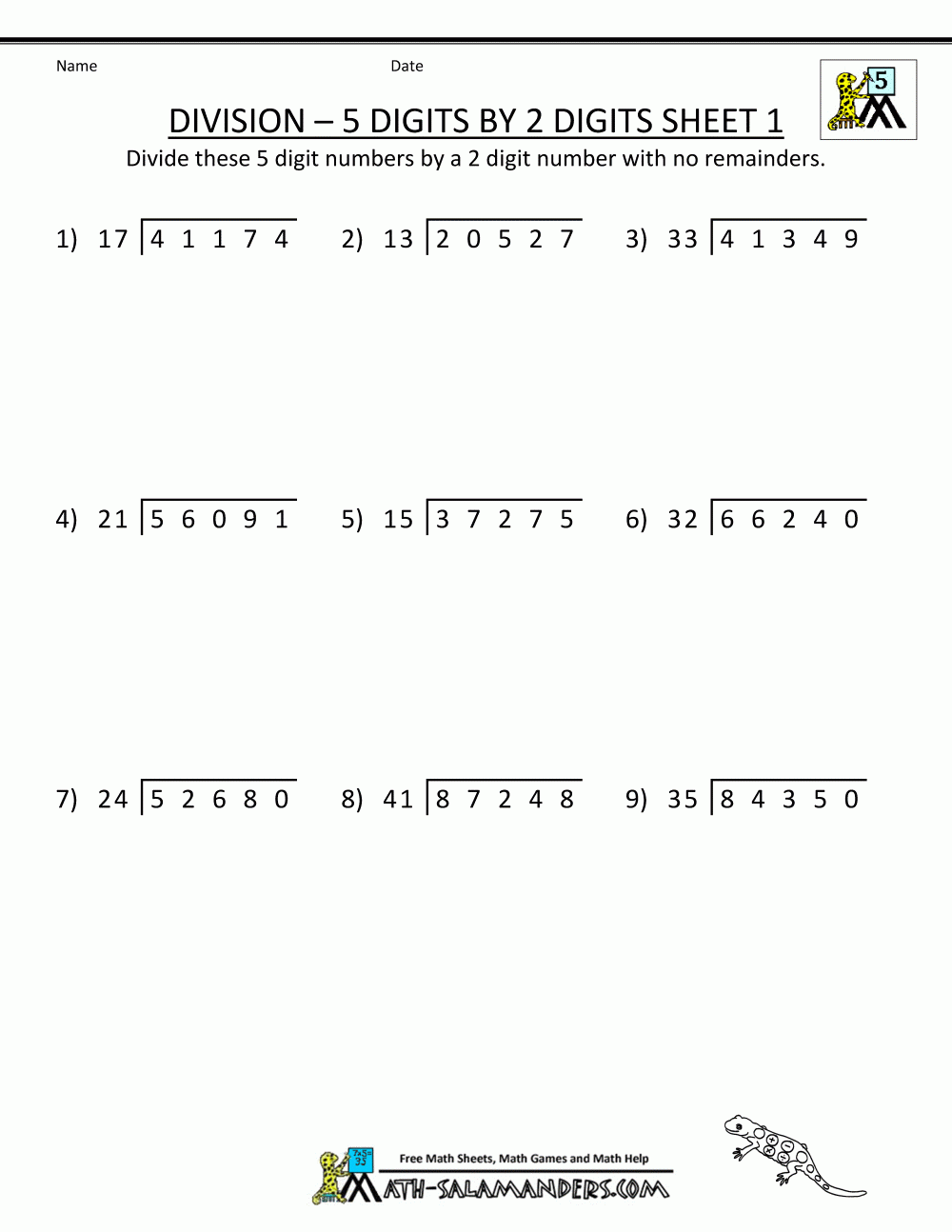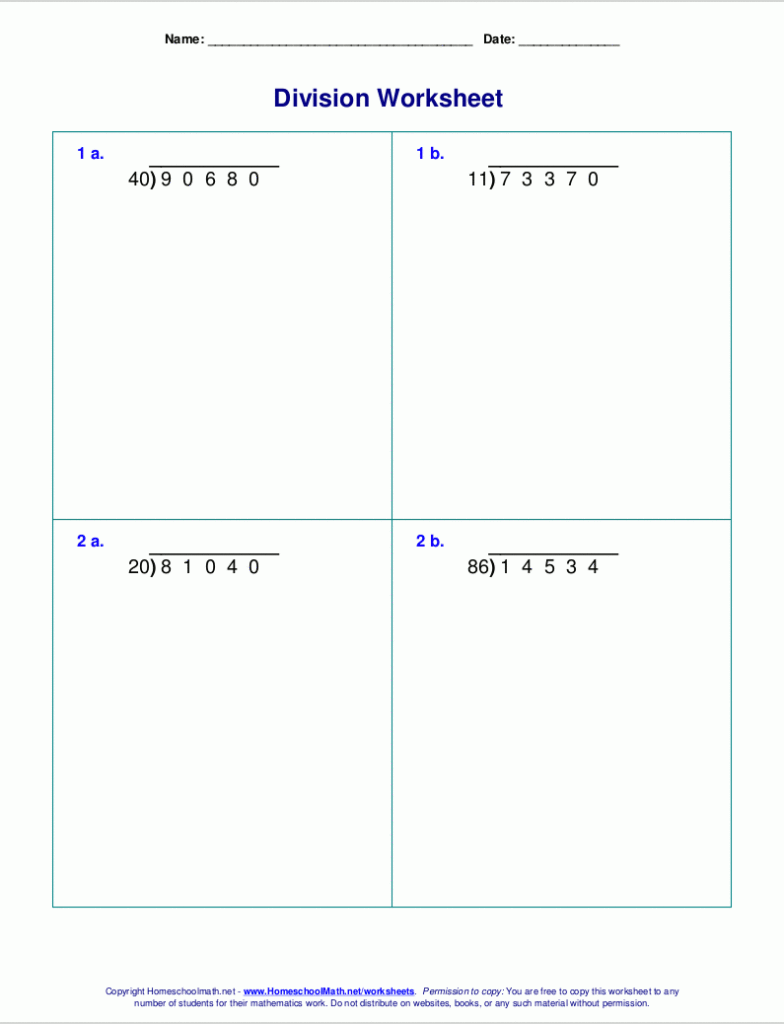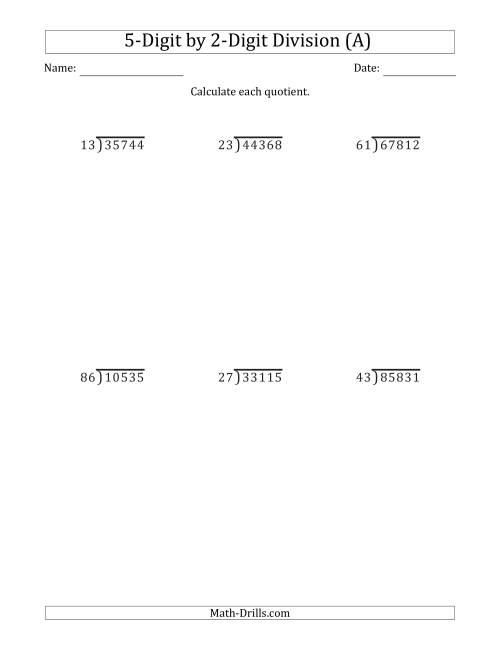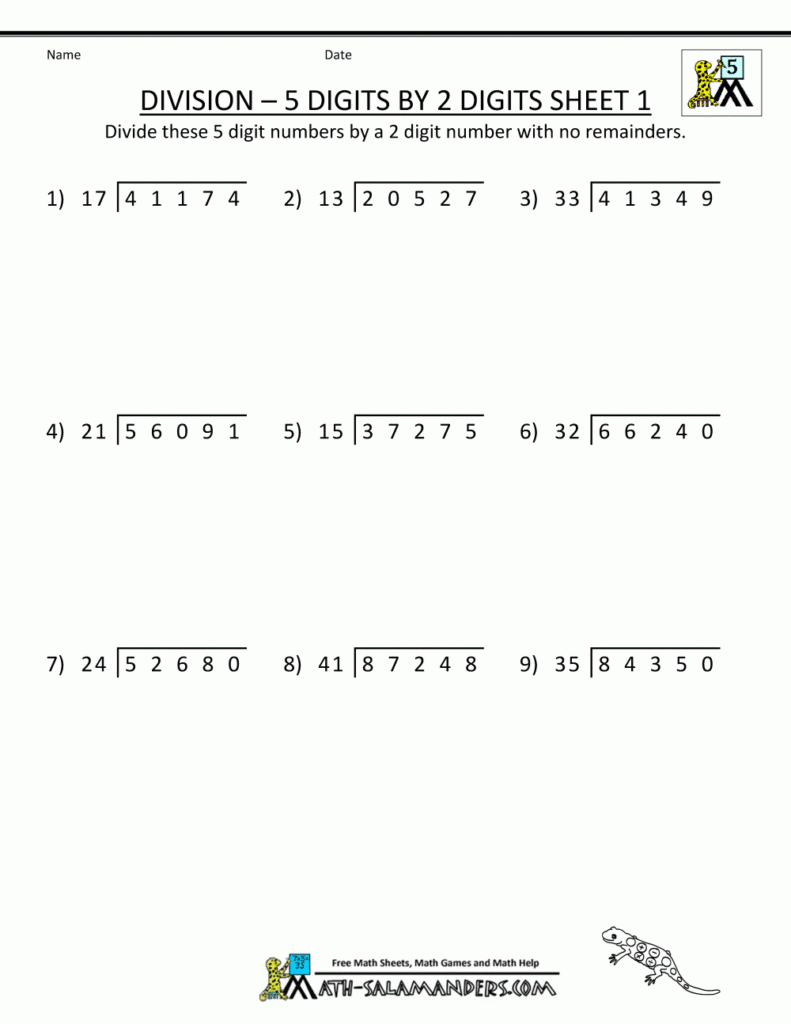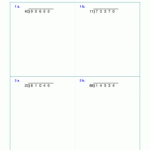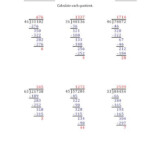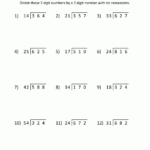5 Digit By 2 Digit Division Worksheets – It’s a fantastic method to master division concepts. They can be extremely useful when preparing for exams in arithmetic. There are a variety of formats are available for worksheets that include whole numbers as well as decimals.
entire numbers
A worksheet on division can aid your child in getting an understanding of the fundamental concept of maths operations using whole numbers. The worksheets on Dividing Whole Numbers can be used to help students comprehend the concept and to practice their division skills. These worksheets provide visual examples and real-world examples to illustrate the concepts.
Worksheets which can be used to divide are available in various forms. Many-digit worksheets and long divisions are examples. Multi-digit integers are divided by the divisors using worksheets for multi-digit divide. The remainder and quotient are calculated. Long division worksheets the standard procedure.
There are worksheets which divide whole numbers by fractions, in addition to those that divide numbers traditional. This is a great method to increase students’ ability to think and make the subject natural to them.
Rule of Divisibility
Divisibility worksheets can help youngsters to grasp the concept. They can keep children engaged in learning and aid them in solving division problems. They are also useful for kids to remember and absorb information more quickly.
Students are asked to highlight the numbers that are divisible by the specific numbers on a worksheet that teaches divisibility rules. These worksheets will help strengthen children’s fine motor and decision-making skills. These worksheets assist children in monitoring their education and identifying gaps in knowledge.
A number must be divided by its digits in order to determine if it can be divided by a specific number. Therefore, the number must be divided by the sum of all numbers. The number that is the last must also be even.
Fractional division
It is very effective using worksheets about fractions in order to teach children about fractions. This practice could also be used to help students prepare for algebra in later grades.
The majority of students struggle with the fractional divide on a regular basis in school. The problem lies in the difficulty of understanding this concept. It is possible to help children be able to avoid confusion using worksheets that focus on fractions. These can be used by kids as a method to make sure they have checked their answers. They may be more comfortable in class if they have worksheets that help them divide fractions.
You can use word problems, images or diagrams to assist you in dividing fractions. They also permit students to practice writing fractions in mixed number. These worksheets can be adapted to a range of levels. The worksheets are suitable for the grades 3 to 6.
Decimal division
Dividing whole numbers and decimals are identical operations.The only distinction is the absence of a remainder in decimal division. To divide a decimal the decimal point is moved to the right. Round up or decrease according to the digit that follows the decimal point.
Before you are able to divide a decimal, you first need to determine the amount. Decimal quotient refers to the total of the dividend and the product. It can be multiples of one number 10, multiples 10, or even multiples 100.
A decimal percentient is generally round to a specified number of decimal points. This is achieved by trailing zeros. Since the dividend is worth 0.4 and the divisor is worth 4.88 For instance divising 48.8 by 4 is a decimal division.
Utilize powers of ten in order to divide massive numbers.
The application of powers of ten to divide huge numbers is an essential concept.When a number is extremely small or large it can be extremely useful. You should be able change the decimal point, whether you are dividing an entire or decimal number.
The decimal point has to be moved as many places in dividing a number as there are zeros within the power of ten. Therefore, the initial number decreases while the value increases. The decimal point shifts to the right if it is less than one. If it is larger it moves to its left. When it is less that one, the number of exponents for the value will be less.
You have to subtract the exponents within the divisor of these exponents. This step uses scientific notation
